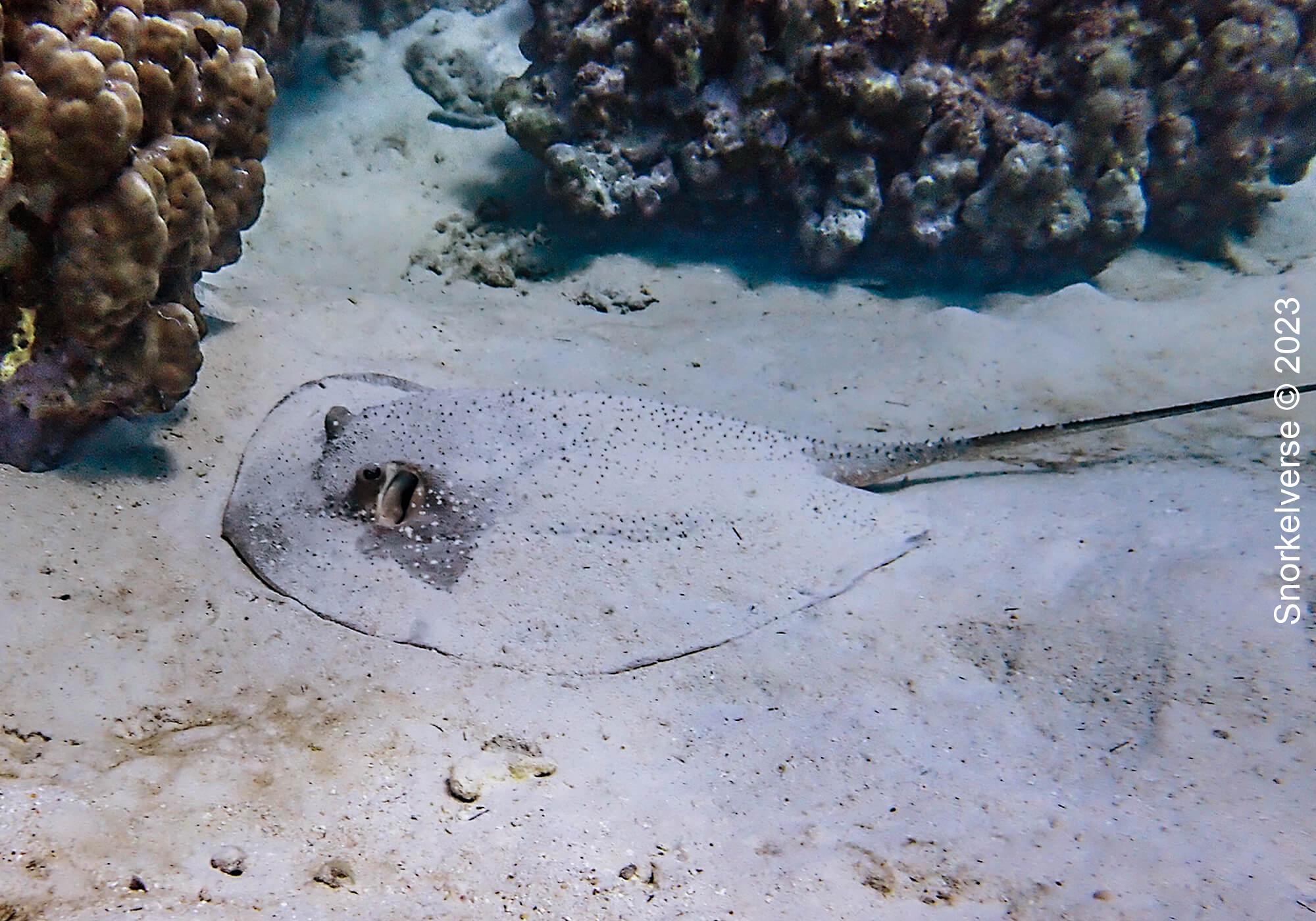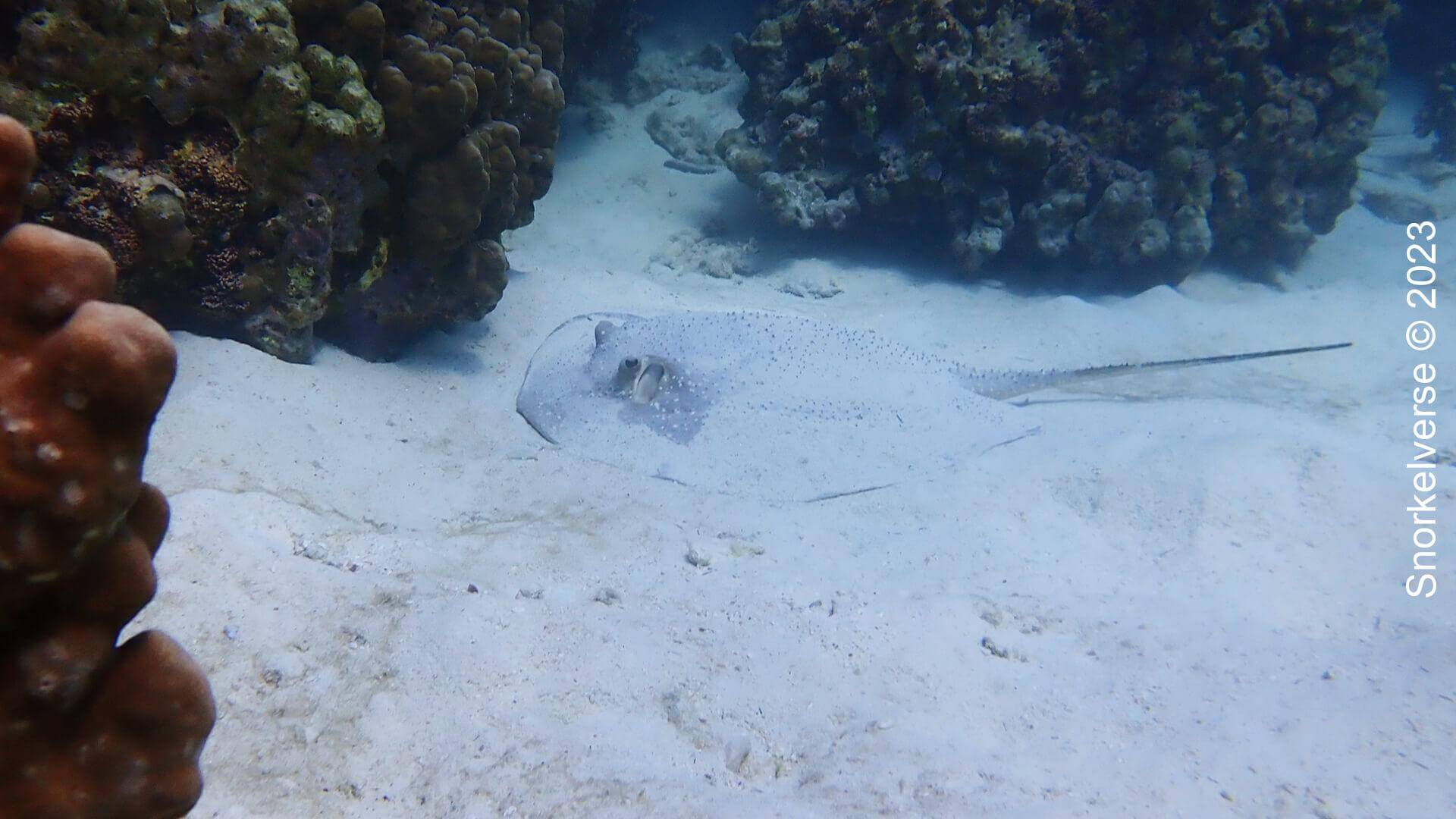

Description
The Porcupine ray (Urogymnus), also known as thornback ray is named after the small barbs that cover its oval body and down its tail. It is a rare species of ray and large in size. Its tail doesn’t hold venom, instead is used to stun predators. The sting ray can vary in appearance from grey to a brown color and as seen in the snorkel video, camouflages into sandy areas of coral reefs.

Snorkeling Video

Habitat
Porcupine rays live tropical and sub-tropical oceans in the Indo-Pacific region, ranging from the Red sea to the Western Pacific.

Diet
Diet consists of primarily small fish and invertebrates which they locate with electroreceptor. They are also known to eat worms, crustaceans, found in the sand.

Appearance
The Porcupine ray is named after the small barbs that cover its oval body and down its tail. The ray has a wide, flat, disc-like body and can vary in appearance from grey to a brown color, and as seen in the video can be seen camouflaged in the sandy areas of coral reefs.

Key Features
- Most recognisable for the small barbs that cover its body, these are not venomous.
- It has an oval body with a tapered thin tail which is used in defense to stun predators.
- Its eyes are relatively small, found just above its gills.

Threats
IUCN Conservation Status: Vulnerable

Frequently Asked Questions
Porcupine rays inhabit the Indian Ocean, Red Sea, and Indo-Pacific Ocean. They tend to inhabit shallow reefs and sandy bottoms, they can be spotted camouflaged in the sand.







